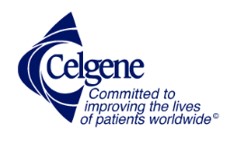Preliminary program
Thursday 15th August
0900-0915: Welcome and practicalities
0915-1100: Introduction to survival analysis (Støvring)
1115-1200: Extrapolation of survival curves beyond observed data. HTA case (Støvring).
1200-1300: Lunch
1300-1530: Estimating life year gain from one-armed trials. HTA case (Goldhaber-Fiebert)
Friday 16th August
0830-1000: Using register data in estimating remaining life years. HTA case (Støvring).
1015-1130: Using frailty models in survival analysis (Moger)
1145-1300: Handling cross-over in RCTs. HTA case (Goldhaber-Fiebert)
1300: Adjourn
Seminar instructors:
- Jeremy D. Goldhaber Fiebert, professor, Stanford University, USA
- Henrik Støvring, associate professor, Aarhus University, Denmark
- Tron Moger, professor, University of Oslo, Norway
Limited number of seats.
Better understanding of cancer biology has paved the way for new treatment principles. Personalized choice of anti-cancer drugs, immune-oncology and CAR-T are examples of new treatment avenues. Several hundred new drugs and therapies are claimed to be in the pipeline. While traditional chemotherapy typically offered 1-3 months of life prolongation, some of the recent therapies increase this to one full year or more.
Better effectiveness, however, is followed by higher prices, and payers globally have concerns about the cost of cancer therapies. Several countries, including Norway, have adopted priority principles based on cost-effectiveness analyses in order to ensure a reasonable relationship between costs and health benefits. Cost-effectiveness analyses necessarily involve uncertainty in part because clinical trials are reported when still substantial proportions of patients are alive and in part because some new therapies are approved by FDA and EMA in one-armed trials without random comparator groups. With life year gains as a core element of cost-effectiveness, there is uncertainty and even disagreement about how survival benefits best can be estimated:
- What methods offer the most valid extrapolation of survival beyond what is observed in the clinical trials?
- Use of cancer registry data: To what extent can survival in similar patient groups prior to the introduction of new therapies guide extrapolation for the new ones?
- How can crossover from control treatment to the new intervention be controlled for in cost-effectiveness models?
- When only one-armed trials are available, how should decision analysts estimate incremental survival?
To address these issues we have invited three scholars with experience from survival analysis and cost-effectiveness analysis. They will first give a brief introduction to survival analysis and subsequently explore some core issues as mentioned above. Additionally, we will use cases taken from Norwegian Health Technology Assessments of cancer therapies to discuss how the issues mentioned above have been addressed. Participants are invited to suggest cases.The seminar is open for anybody interested in the topics and will not require background in statistics. Participants are encouraged to read carefully an introductory paper on survival analysis.
Organizers
The event is hosted by the Department of Health Management and Health Economics at University of Oslo, in collaboration and sponsorship with Statens legemiddelverk, Bayer, Bristol-Myers Squibb, Novartis, Oslo economics, Roche, Celgene.
Contact
For questions about event contact Kristi Brinkmann Lenander.
![]()

![]()
![]()
![]()


